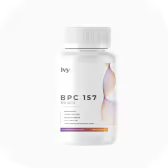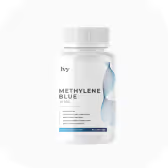Find your tirzepatide treatment today


Contrave vs Zepbound: Weight Loss Comparison & Differences
Choosing between Contrave and Zepbound often depends on how much weight you want to lose, how each medicine works in your body, and whether you prefer a daily pill or a weekly injection.
Contrave works in the brain to reduce cravings and can support steady, modest loss with diet and activity.
Zepbound targets GLP-1 and GIP gut-hormone pathways and has shown some of the highest average weight losses reported in modern trials.
In this guide, you will see how each option works, the results you can expect, dosing, cost, safety, and who each fits best, so you can choose with confidence.
What is Contrave?
Contrave is a prescription weight-loss tablet that combines naltrexone and bupropion in an extended-release pill.
It’s intended for adults with obesity (Body Mass Index, BMI ≥30) or for adults who are overweight (BMI ≥27) and have a related condition such as high blood pressure, high cholesterol, or type 2 diabetes.
It works best alongside a reduced-calorie diet and regular physical activity.
How Contrave Works
Contrave combines two medicines that act in the brain.
- Bupropion raises dopamine and norepinephrine and activates POMC neurons in the hypothalamus. These neurons send “eat less” signals and can modestly increase energy use.
- Naltrexone blocks opioid receptors and prevents β-endorphin from turning off those POMC signals too soon.
Together, they reduce cravings and help manage emotional eating, which makes a lower-calorie plan easier to follow.
What is Zepbound?
Zepbound (Tirzepatide) is a prescription once-weekly GLP-1 receptor agonist injection that can help you lose a significant amount of weight..
It contains tirzepatide, a medication that works on two natural gut hormones: GLP-1 and GIP.
It is intended for adults with a BMI ≥ 30, or a BMI ≥ 27 plus a weight-related condition (such as type 2 diabetes or sleep apnea).
Many patients use it because it pairs meaningful weight loss with improvements in blood sugar and appetite control.
How Zepbound Works
Zepbound (tirzepatide) is a once-weekly injection that works through your gut–brain axis using two natural hormone pathways:
- GLP-1: slows how quickly your stomach empties, helps you feel full sooner, and steadies your after-meal blood sugar.
- GIP: reinforces those fullness signals and helps your body handle dietary fat more efficiently.
Together, these signals help you eat less without feeling as deprived, ease between-meal hunger, and support healthier metabolic markers.
For many people, that’s why Zepbound delivers greater average weight loss than pill-only options when paired with a structured plan and lifestyle support.
Here’s what a Redditor has to say…
“Zepbound has gotten me down 15lbs in my first 3 weeks, so I’m all in on Zepbound.”

Contrave vs Zepbound: At a Glance
Here’s a clear, side-by-side look at Contrave and Zepbound across their key differences — administration type, how they work, expected results, risks, and cost.
Struggling to afford the $1400 a month for Zepbound? Ivy Rx can help. Access personalized GLP-1 injections starting from $197 a month.
Here are the other factors to weigh when you choose between Contrave and Zepbound.
Mechanism of Action
Contrave works on central nervous system pathways that influence appetite and food reward.
Zepbound works on gut-hormone pathways that influence fullness, gastric emptying, and glucose control.
Contrave
- Oral extended-release tablets
- Targets dopamine and norepinephrine for appetite control
- Blocks opioid receptors to reduce food reward
- Fits people with intense cravings or emotional eating patterns
Zepbound
- Subcutaneous injection once weekly
- Activates GLP-1 and GIP receptors
- Slows digestion, increases fullness, and lowers hunger signals
- Improves glucose and lipid control alongside weight loss
Effectiveness for Weight Loss
When it comes to results, Zepbound consistently outperforms Contrave in both the amount of weight lost and the percentage of patients hitting significant milestones.
Contrave
- Average loss: 6–9% of body weight over 1 year with diet and exercise support.
- 45–55% achieve at least a 5% loss.
- In type 2 diabetes, Contrave can cause over 5% weight loss, and 0.6% to 1.0% reduction in HbA1c.
- Contrave works best when paired with a structured nutrition and activity plan.
Zepbound
- Average weight loss ranges from 15–21% at higher doses in the SURMOUNT-1 trial.
- 50% of participants lost 20% or more of their starting weight.
- Weight loss benefits can be seen even at lower doses (5 mg weekly).
- In SURMOUNT-2 (type 2 diabetes): 12.8–14.7% weight loss.
- Outperformed semaglutide in head-to-head comparisons.
Start your personalized GLP-1 plan with Ivy Rx.
Dosage & Administration
Contrave
- Week 1: 1 tab AM
- Week 2: 1 AM + 1 PM
- Week 3: 2 AM + 1 PM
- Week 4+: 2 AM + 2 PM (max dose)
Zepbound
Inject once weekly on the same day. Consult health care providers, like Ivy Rx, to increase your dose gradually to help your body adjust and reduce GI side effects.
Recommended titration schedule
- Weeks 1–4: 2.5 mg once weekly (starting dose to improve tolerability)
- Weeks 5–8: 5 mg once weekly (standard starting therapeutic dose)
- Weeks 9–12: 7.5 mg once weekly (if additional weight loss support is needed and prior dose was well-tolerated)
- Weeks 13–16: 10 mg once weekly (if needed; only after ≥4 weeks at 7.5 mg)
- Week 17+: 12.5 mg or 15 mg once weekly (maximum 15 mg; used for patients who’ve built tolerance and need added effect)
Dosage escalation rules
- Increase only after you’ve tolerated the current dose for at least 4 weeks.
- If side effects persist, hold at your current dose or step back a level until symptoms improve.
- Never take extra doses to “catch up.”
What happens if you miss your dose?
If it has been four days or less, take the dose when you remember and return to your usual day. If more than four days have passed, skip the missed dose and take the next one on schedule. When in doubt, contact your clinician.
See our Zepbound (tirzepatide) dosing chart for a week-by-week schedule.
Benefits
Here’s a clear, side-by-side look at the benefits of Contrave vs. Zepbound:
Side Effects
Both Contrave and Zepbound have their benefits, but also have some potential side effects you should be aware of:
See our in-depth Zepbound (Tirzepatide) side effect guide before making a choice.
Costs & Insurance (Quick Compare)
Here’s a simple side-by-side overview of typical cash costs and coverage for Contrave vs. Zepbound:
Learn more about tirzepatide cost and start your affordable, personalized GLP-1 plan with Ivy Rx.
How to Choose the Best Option
Results you’re aiming for
Clinical studies show Zepbound (tirzepatide) often produces larger average weight loss (about 15–21%), while Contrave (naltrexone/bupropion) averages roughly 5–9% with lifestyle support.
Your best choice depends on the amount of weight you want to lose and the approach you’re most likely to stick with.
Format and routine fit
Prefer a daily pill and no needles? Contrave fits that preference. Comfortable with a once-weekly injection and fewer daily reminders? Zepbound may suit your routine better.
What you want to improve
If your main challenge is cravings or emotional eating, Contrave targets brain pathways involved in those behaviors. If you’re also focused on metabolic markers (like blood sugar), GLP-1/GIP therapy such as Zepbound is designed to act on gut-hormone pathways that influence appetite and glucose control.
Budget and coverage
Out-of-pocket costs and insurance coverage vary. Contrave is often less expensive upfront, while costs for injectables can vary more widely. Check your benefits and talk with your clinician about savings options.
Health history and safety
Each medication has specific contraindications (for example, particular thyroid histories with GLP-1/GIP therapies; seizure or uncontrolled hypertension risks with Contrave). Review your medical history with a licensed provider to choose the safest, most effective path for you.
Can You Take Contrave and Zepbound Together?
There are no clinical trials on combining Contrave and Zepbound. Different mechanisms do not guarantee better results together and may increase side effects and costs.
Most healthcare providers recommend using one therapy at a time but speak to your doctor about the possibility of combining treatments.
If your current plan is not delivering, Ivy Rx can help you explore proven alternatives.
Warnings and Precautions
Contrave
- Avoid if you have: seizure disorders, uncontrolled hypertension, bulimia, anorexia, pregnancy, opioid use, or significant mood instability.
- Boxed warning: suicidal thoughts or behaviors.
- Monitor blood pressure and heart rate during treatment.
- Avoid high-fat meals to reduce side effects.
Zepbound
- Avoid if you have a history of medullary thyroid carcinoma (MTC) or Multiple Endocrine Neoplasia type 2 (MEN2), severe GI disease, pancreatitis, or gallbladder disease.
- Watch for signs of abdominal pain, gallbladder issues, or injection site reactions.
Can You Switch From Contrave to Zepbound?
Yes, many patients do. Your provider will usually have you stop Contrave, allow a short washout period, then begin Zepbound at the starting dose.
This helps reduce overlapping side effects and gives your body time to adjust. Switching can be a good choice if you’ve plateaued on Contrave but want more substantial results. Always speak to your doctor before switching from Contrave to Zepbound.
Ready to make the switch to a GLP-1 treatment? Start a consultation and personalized GLP-1 plan with Ivy Rx that fits your health profile, goals, and routine.
Start Your Weight Loss Journey with Ivy Rx Today
If you’re ready for steady, supported results, start with Ivy Rx’s personalized GLP-1 injection program tailored to your health profile, with custom dosing and clinician follow-up.

Ivy RX patients
Members of Ivy RX branded medications were paid for their testimonials.
- Apovian CM, Aronne L, Rubino D, Still C, Wyatt H, Burns C, Kim D, Dunayevich E; COR-II Study Group. A randomized, phase 3 trial of naltrexone SR/bupropion SR on weight and obesity-related risk factors (COR-II). Obesity (Silver Spring). 2013 May;21(5):935-43. https://pmc.ncbi.nlm.nih.gov/articles/PMC3739931/. doi: 10.1002/oby.20309.
- Zierle-Ghosh A, Jan A. Physiology, Body Mass Index. [Updated 2023 Nov 5]. In: StatPearls [Internet]. Treasure Island (FL): StatPearls Publishing; 2025 Jan-. Available from: https://www.ncbi.nlm.nih.gov/books/NBK535456/
- Sherman MM, Ungureanu S, Rey JA. Naltrexone/Bupropion ER (Contrave): Newly Approved Treatment Option for Chronic Weight Management in Obese Adults. P T. 2016 Mar;41(3):164-72. https://pmc.ncbi.nlm.nih.gov/articles/PMC4771085/.
- https://www.nejm.org/doi/full/10.1056/NEJMoa2206038. Accessed 12th August, 2025.
Related
articles

15 Celebrities Who Took Ozempic for Weight Loss (& Results!)
See which celebrities have publicly confirmed using Ozempic or other GLP-1s—plus what they’ve said about their experience and results.
%20(1).jpg)
Microdosing GLP-1 Reviews: Real User Results, Experiences, Side Effects & Costs
Curious whether GLP-1 microdosing works? See real user reviews on results, appetite changes, side effects, and costs—plus who benefits most from microdosed semaglutide and tirzepatide.
%20(2).jpg)
Microdosing GLP-1 Cost: Complete 2026 Pricing Guide
See how much GLP-1 microdosing costs in 2026, including monthly pricing ranges, what affects the price, and ways to lower costs safely.

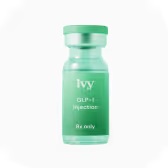





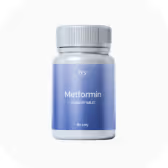

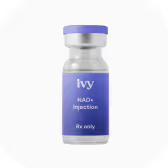



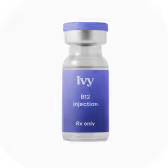
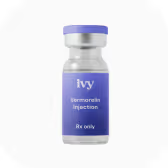
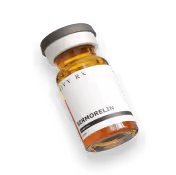
.avif)

